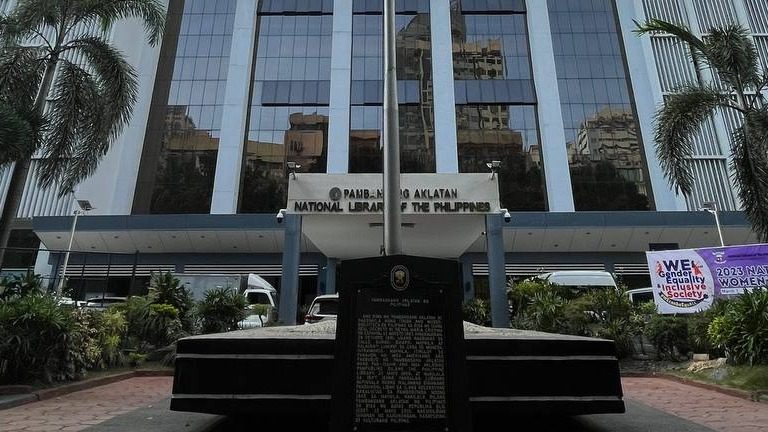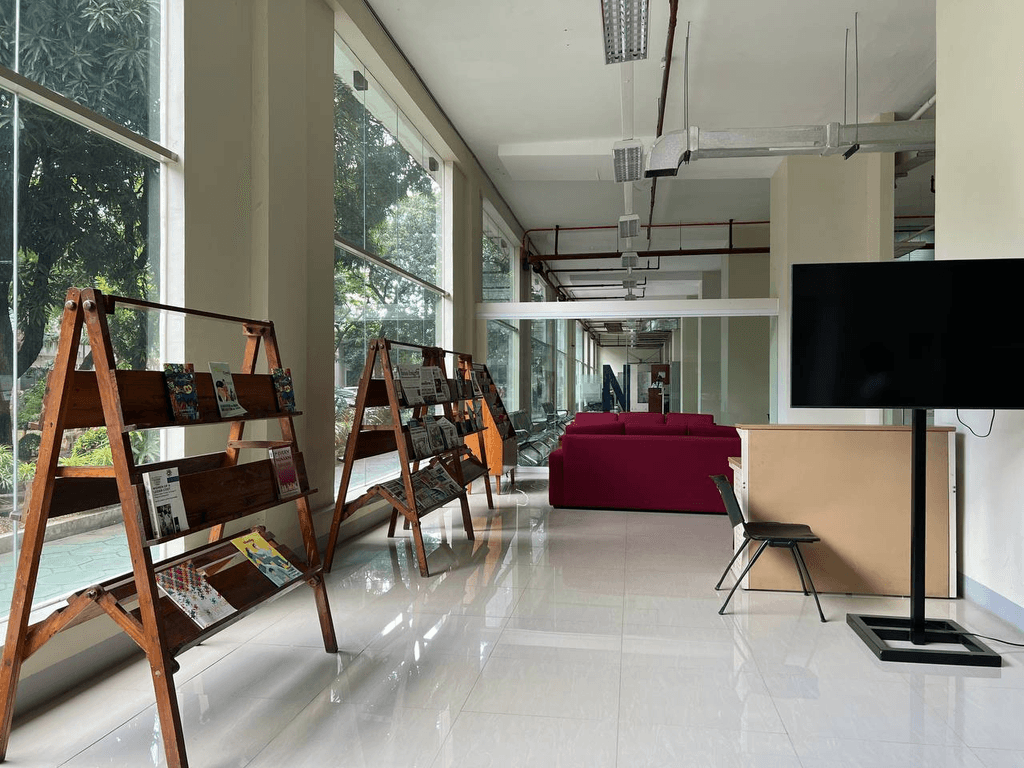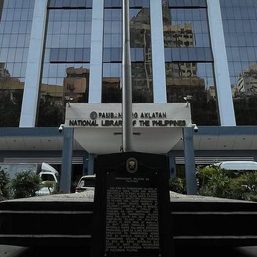SUMMARY
This is AI generated summarization, which may have errors. For context, always refer to the full article.

MANILA, Philippines – Have you been searching for a quiet place to study, read, or just be? Whether you’re a student writing a research paper, a professional looking for a working spot, or simply a bookworm who wants to read in peace – the National Library of the Philippines (NLP) should be on your next weekend’s lakwatsa list.
As a fresh graduate, I have been searching for a new working spot to accomplish my miscellaneous adulting to-dos after losing access to my university’s library. Wishing to have a change of pace from the sometimes chaotic home and café environment, I stumbled upon the National Library only a few train stations away from my residence.

Not a lot of people know about what the premier library offers. Despite its age as the first library established in the country, it’s in good shape to welcome many visitors. Some might also think that getting a library card is a tedious process, but it’s very easy and convenient to get one.
Considering the lack of public spaces for people’s work and leisure, I excitedly paid a visit to the NLP to see if it checked my boxes as a potential hangout spot. The accessibility, working environment, as well as completeness and relevance of resources are what I’m looking for in the foremost repository of knowledge and culture in the country.
Read on to know what you can expect visiting the national library, nestled in the heart of Manila.
Entry requirements
Walk-in visitors are now accepted, in accordance with the minimum health protocols of the IATF. However, only fully vaccinated visitors are accommodated in the reading areas, which now allows 100% on-site venue capacity.
The NLP is free for public use and does not require a library card to enter. Be sure to bring one valid ID, as it is needed for registration in the IT division upon entry. You will be provided an entry stub valid for the day.
If you plan to visit the library often, securing a library card is a more convenient option. Simply approach a staff member in the main lobby to apply for a card. After checking your ID and details, your picture will be taken and the card will be printed for P100.

For this price, you already get a lifetime membership. Having a library card makes it easy to enter the premises and use the library’s resources, including borrowing materials.
Experiencing the National Library
The reading area for library-goers is on the second floor of the building. During my visit, I observed the diversity of library visitors – younger students, working professionals, and a couple of older individuals.
Some had multiple library textbooks open on their tables, while others only used their own laptops and tablets. Visitors were in varying states of focus, with some deeply concentrating on their own tasks, while others were quietly chatting with each other.
I was able to be productive thanks to the free Wi-Fi offered by the library. For those who don’t want to bring their own devices, there are multiple computers you can use for browsing online.
The librarians were approachable and assisted library-goers in getting their needed materials which can be searched and reserved through the online public access catalog (OPAC). You can also use it before visiting the library to see if the references you need are available. Both new and old materials are available in the catalog, so there’s no need to worry if you need sources from different times.

I was able to borrow a variety of materials – newspapers from past years, textbooks, magazines – which satisfied both my academic and recreational reading purposes. To top it all off, the air-conditioned premises and quiet surroundings lent to my greater immersion and enjoyment of reading and working. It was also enjoyable to be in the presence of others who were similarly immersed in their own worlds.
The reading area did have limited space as it is currently open only in the second floor. However, there was a sufficient number of available seats during my visit. The tables can be used by groups that need to work together or shared by individuals who want to focus and concentrate on their work.
With its accessibility, helpful staff, and decent working environment – the library is an ideal workspace for anyone and everyone.
Collections of the past and present
Established by the royal order of the Spanish government on August 12, 1887, the NLP (formerly named Museo-Biblioteca de Filipinas) has endured the test of time.
It is only fitting that it is known as “the repository of the printed and recorded cultural heritage of the country,” as written in NLP’s official mission statement.
According to their 2022 annual report, the NLP has preserved over 131 million pages of Filipiniana materials and acquired more than 280,000 new volumes of library materials.
The library has an extensive collection of historical resources, even housing Emilio Aguinaldo’s letters. Last year, an exhibit was also organized by the library showcasing Jose Rizal’s original manuscripts of his novels.
Of course, contemporary works are also important. The library also makes sure to constantly update its collection of materials to stay relevant to the needs of the present.
Other activities are also held in the library, including events, exhibits, and guided library tours.
Truly, the library’s resources are vital for “our people’s intellectual growth, citizenship building, life-long learning and enlightenment.”
The high ceilings, wooden pillars, and open spaces in the building complex gives an atmosphere of grandness to the national library. Along with the co-working reading space, it was easy for me to feel like I was surrounded by history even in the middle of a busy city.
I previously thought that the national library is incomplete and outdated. However, I was proven wrong after discovering the library’s vast collections and extensive services. The library is constantly expanding its archive, so it’s advisable to find opportunities to make use of these public resources for our own learning and development.
My visit provided an important reminder that public libraries are important places for the community. Building and investing in more spaces like this would be beneficial for many, as libraries offer resources to anyone and everyone, regardless of age and background.
The National Library of the Philippines is located in Rizal Park, along T.M. Kalaw Avenue in Ermita. It is situated next to the Museum of Philippine Political History and the National Historical Commission. The library is open to the public, Mondays to Fridays from 9 am to 4 pm.
To keep yourself posted on library updates and events, follow the NLP’s official Facebook page. – Rappler.com
Charlene Enriquez is a Rappler intern.
Add a comment
How does this make you feel?
![[OPINION] Where are the community libraries 30 years after we passed the law?](https://www.rappler.com/tachyon/2024/06/tl-barangay-public-libraries.jpg?resize=257%2C257&crop=195px%2C0px%2C720px%2C720px)

![[WATCH] How public libraries in the metro strive to be community hubs](https://www.rappler.com/tachyon/2023/10/title-card-ls-2.jpg?resize=257%2C257&crop=411px%2C0px%2C1080px%2C1080px)


There are no comments yet. Add your comment to start the conversation.